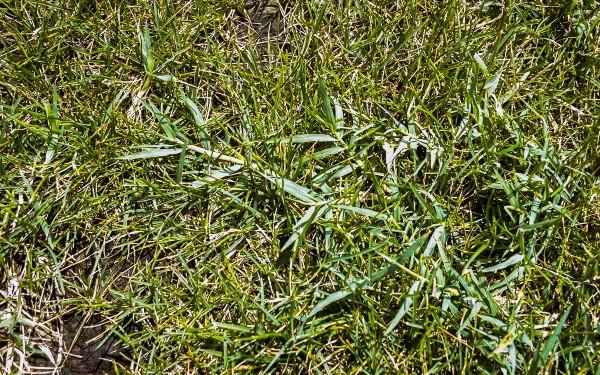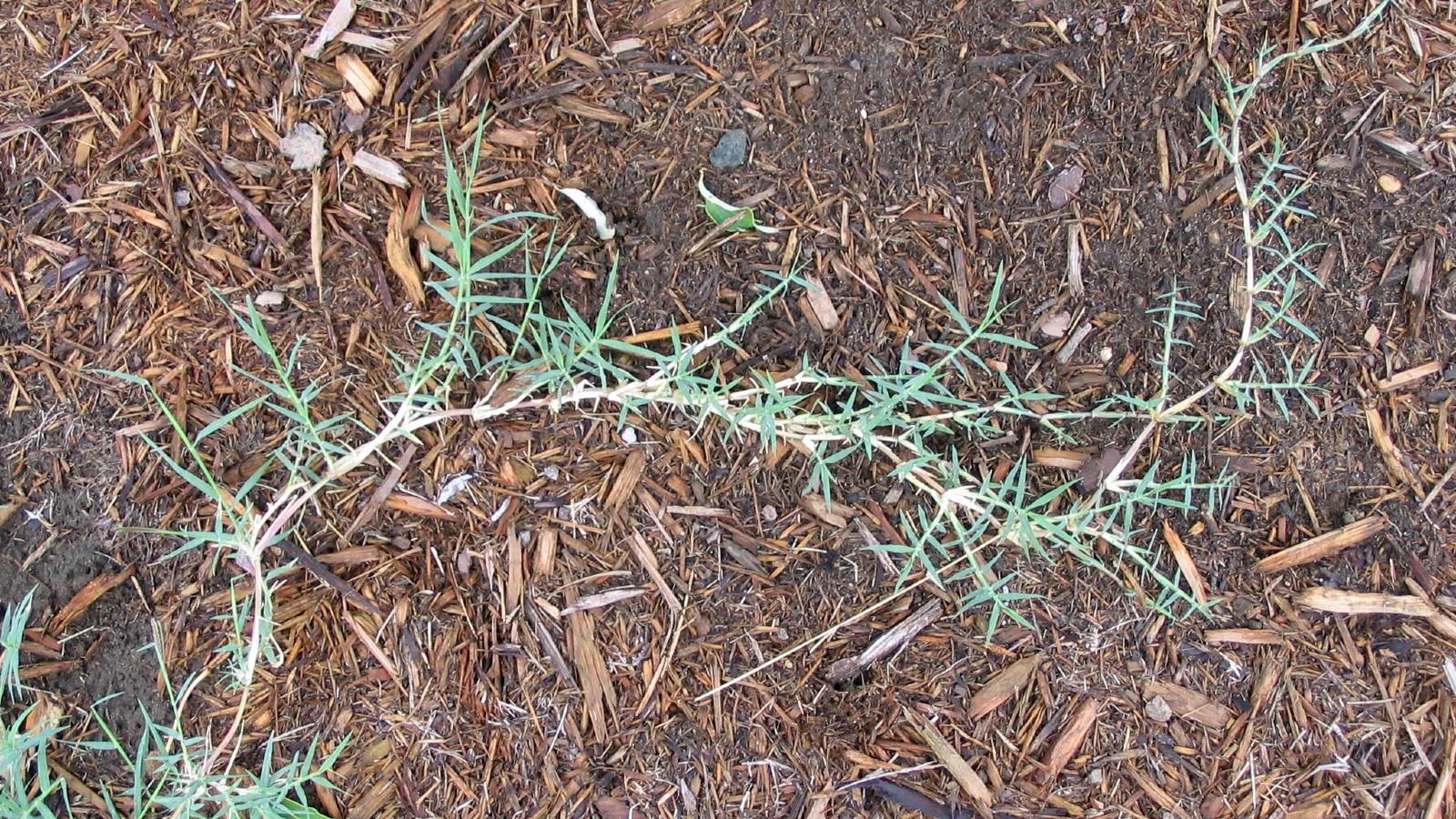Conditions that favor growth
This grass thrives in full sun and high temperatures. It dies out in the shade. Mowing a lawn too short creates a favorable environment for it.
Management
Lawn care practices
Maintain healthy, dense turf that can compete and prevent weed establishment. Mow lawn at 3-4 inches high during the growing season and seed bare spots.
Lawn Care
Mechanical management
In ornamental beds, small infestations can be dug out by hand. You must remove all parts of the root system. Do not rototill live plants as the weed can regrow from root pieces left in the soil.
Manage Weeds Without Chemicals
Chemical treatment in lawns
Perennial grasses like bermudagrass are extremely difficult to control selectively in turfgrasses.
-
A liquid, selective post-emergent herbicide with the active ingredient Fenoxaprop can be used to suppress bermudagrass in lawns.
-
Alternatively, use glyphosate (a non-selective herbicide) to spot-treat or renovate the entire lawn. Renovation should be initiated in mid-to-late August allowing time for reseeding in September into early October. Weeds must be actively growing in August when glyphosate is applied.
To improve control, water well and allow foliage to grow a week or two before treating. Apply glyphosate at the rate recommended for your weeds and do not disturb the foliage or roots for a week after application. Water to encourage any re-growth and treat again if new growth appears. But, be aware chances are good that the bermudagrass will return again in the future. New grass can be seeded 7 days after treatment when you are sure the weedy grasses are dead.
Lawn Herbicides for Weed Control

